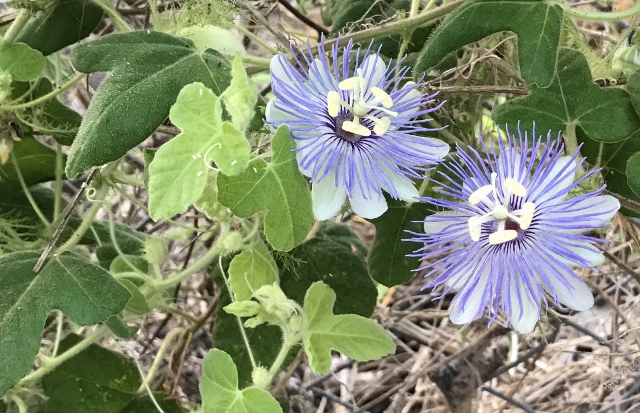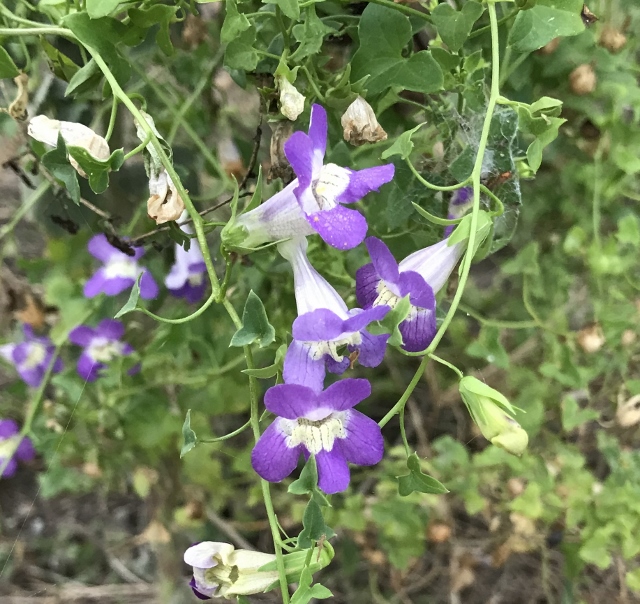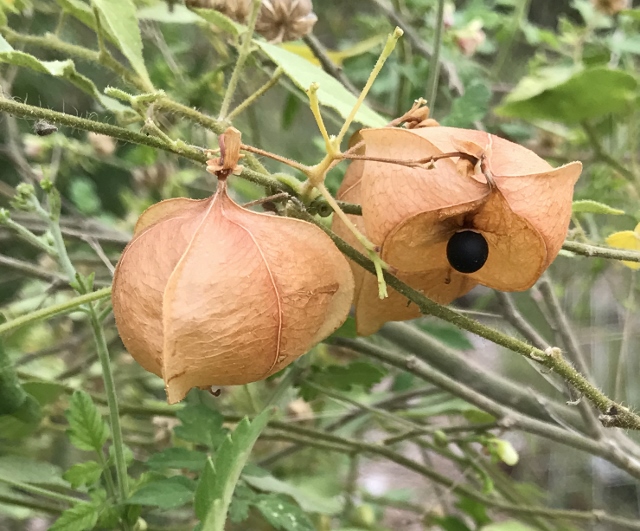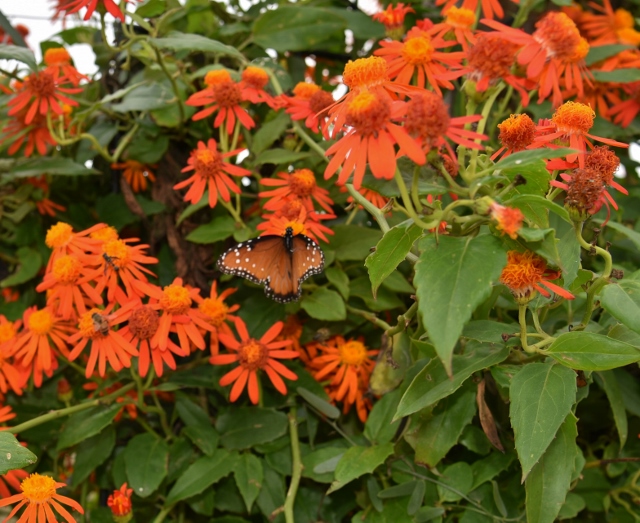
Story and photos by Anita Westervelt, Texas Master Naturalist
Vines add vibrancy and variety to a garden while attracting birds, butterflies and other pollinators.
Snapdragon vine, Maurandya antirrhiniflora, is a dainty vine with small, crisp, heart-shaped leaves and purple and yellow flowers that bloom most months of the year. It readily self-propagates, survives with limited water and little care and adds color in the winter as it intertwines with other plants. Snapdragon vine is host to the common buckeye butterfly and a nectar source for hummingbirds and butterflies.

For all their delicate and exotic look, passion flowers such as Passiflora foetida are quite hearty, surviving without care along scrub land, road edges and cultivated fields. Small up shoots in early spring are recognizable by wispy, pale green trefoil-shaped leaves. As the vine grows, long tendrils help to support it as it travels.
Passion flowers are not particularly valuable as a nectar source but are exceedingly important in pollinator and butterfly gardens. The intricate flowers open before dawn and are abuzz with early morning bees gathering pollen. The flowers begin closing by midmorning. Passion vines are hosts to fritillary and heliconian butterflies.
The native P. foetida readily reseeds itself and is easy to control in unwanted areas. Birds help spread the seeds. There are nearly 550 varieties of passion vines that grow in tropical and subtropical climates. The Rio Grande Valley is considered the subtropics. Seed packets of passion vines are available commercially and may need summer heat conditions for germination or require seed scarification for successful propagation.
Another interesting vine is common balloon vine, Cardiospermum halicacabum. It’s especially fun when the seedpods turn cinnamon-colored and look like fall-festive lanterns, dangling in the garden. The dried pods are tissue-paper thin, each containing two or three round black, white-tipped seeds. Bob-white quail eat the seeds. Tiny white orchid-like flowers tipped with pink bloom during most of the year, providing nectar for butterflies and bees. The vine is a host plant for silver-banded and other hairstreak butterflies, silvered prominent moths and the red-shouldered bugs.

These vines like full sun; they can be left to meander in small mounds on the ground. They will wend their way over adjacent plants and up small tree trunks. Snapdragon and passion vines have a light airy growth; they will not smother, strangle nor harm a supporting plant. They can be trained on small trellises. Common balloon vine grows longer and forms a denser mass more suited for a fence, large trellis or support of its own; in the wild, it can cover other vegetation.
While native plants are recommended, some introduced species are popular in butterfly gardens such as Mexican flame vine, Pseudogynoxys chenopodioides. This vine should be trained and maintained on its own support, otherwise, it can become a massive ground cover with runners in all directions. In its favor, it is a splendid bloomer during the cold season. It attracts monarch, queen and other butterflies and pollinators when other plants may not be blooming.
For a list of local native plant growers, visit https://rgvctmn.org/rgv-plants/.
